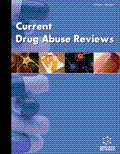Abstract
Over the course of the 20th century, it became increasingly clear that amphetamine-like psychostimulants carried serious abuse liability that has resulted in sociological use patterns that have been described as epidemics. In fact, drug addiction is a brain disease with a high worldwide prevalence, and is considered the most expensive of the neuropsychiatric disorders. This review goes beyond the previously well-documented evidence demonstrating that amphetamines cause neuronal injury. Cellular and molecular mechanisms involved in the neurotoxicity of psychostimulants drugs have been extensively described giving particular attention to the role of oxidative stress and metabolic compromise. Recently, it was shown that the amphetamine class of drugs of abuse triggers an inflammatory process, emerging as a critical concept to understand the toxic effects of these drugs. Moreover, it has been suggested that psychostimulants compromise the capacity of the brain to generate new neurons (neurogenesis), and can also lead to blood-brain barrier (BBB) dysfunction. Together, these effects may contribute to brain damage, allowing the entry of pathogens into the brain parenchyma and thus decreasing the endogenous brain repair resources. The overall objective of this review is to highlight experimental evidence in an attempt to clarify the role of neuroinflammation in amphetamines-induced brain dysfunction and the effect of these drugs on both neurogenesis and BBB integrity.
Keywords: Amphetamines, neurotoxicity, neuroinflammation, glial cells, adult brain neurogenesis, subventricular zone, subgranular zone, blood-brain barrier, matrix metalloproteinases, ecstasy group, mental stimulation, psychotic, narcolepsy, obesity, neuropharmacological, monoamine, affinity, methylenedioxy group, Parkinson's disease, synapse, dysfunction, neurons, plasmalemmal transporters, intraneuronal binding sites, pH, cytosol, oxidative stress, cytoplasm, catechol, hippocampus, frontal cortex, striatum, cytoskeletal damage, amoeboid morphology, growth, neurotrophic, cytotoxic products, astrogliosis, neuroinflammation process, hierarchical cytokine signaling, paradoxical hypothermia, Alzheimer type, cell death, hyperthermia, intracerebroventricular, peripheral immunosuppressive, cyclooxygenase, microgliosis, binding activity, adrenal hormones, glucocorticoides, proliferation, insulin, growth factor, excitotoxicity, injection, endothelial cells, astrocyte-end feet, adherens junctions, paracellular permeability, methyl group, ortho-quinone, sulfyhdryl group, cerebellum, autocatalytic cleavage, multiple sclerosis, encephalitis, glycoprotein, HIV protein, oxidative-stress, synergistic effects, chemotherapy
 16
16















